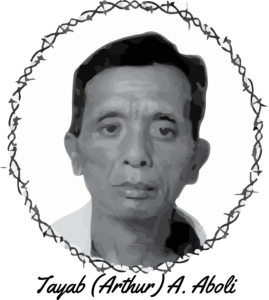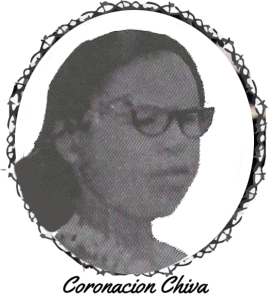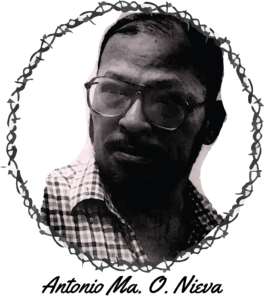Freedom’s Unsung Heroes and Martyrs
/Bantayog ng mga Bayani
Reading through the souvenir program, I find out that my friend, Dr. Ruben Mallari, former president of the Ninoy Aquino Movement (NAM) in the U.S., who passed away last year, was actually the one who inspired the Bantayog. Dr. Mallari went to the Philippines in 1986 to join the celebration of the ouster of the dictator and the restoration of democracy. He suggested that “a memorial be established in honor of those martyrs and heroes who fought for the cause of truth, justice, peace and freedom but died without seeing the dawn of freedom.” These martyrs and heroes might be forgotten in the daily struggle to rebuild the nation and its economy, the brochure stated.
For many years, Bantayog ng mga Bayani Foundation was headed by Senator Jovito Salonga. A quote from Salonga graces the front page of the brochure: “Hindi tayo maaring makalimot [We must not forget]. As long as we continue to remember the martyrdom and the heroism of those who in the darkest period of our nation’s history… gave their lives that we might become free, and as long as we resolve never again to allow the forces of darkness to prevail, this annual celebration will be truly a day of meaningful tribute.”
Senator Jovito Salonga
I am here for a personal reason: My father, Alfonso Yuchengco, is being honored as one of the heroes “… for his support to the Light-a-Fire Movement, helping call international attention to the regime’s growing abuses and repressive measures; for aligning himself with the ranks of those fighting for freedom and democracy, against a dictatorship that sought to control all political and economic power.”
The other ten new awardees are not familiar names to us, but their resistance to the powerful dictator deserves our attention. (Excerpts taken from souvenir program.)
Tayab (Arthur) Ayyungo Aboli was a member of the Butbut tribe. The Marcos government embarked on building a series of dams along the Chico River in the Cordillera region, which would have drowned settlements and farms, destroyed rice fields and burial grounds. It would have submerged communities in Mt. Province and Kalinga. Aboli joined the resistance, and the Marcos regime responded by sending in more troops who raided and killed some of the resistance leaders. In 1986, the group negotiated peace with President Cory Aquino. Aboli was only 57 years old when he succumbed to a lingering illness.
Cesar Tiaga Cayon organized the Lumad peasants, farm workers and the poor people of Northern Mindanao against the Marcos regime’s powerful logging cronies that would have denuded many forested mountains in the area. In June 1981, Ka Andy, as he was known, was killed in a raid of the village of Hinundayan in the mountains of Nasipit. The soldiers cut off his head to claim the reward.
Coronacion (Walingwaling) Chiva spent most of her life as a union organizer in Panay. She was arrested three times and despite threats on her life, she continued with her regular activities. One day, coming home from town, she and several women were preparing to cross the river when two men pointed a gun at her. She died from multiple gunshot wounds at 51 years old. She has become a legend of sorts in Iloilo for her unique, brave and outspoken nature.
Dalama (Elma Villaron-Tangente) was a champion of the rights of her community, the Sulod-Bukidnon of Panay. Its people had been enduring harassment by the military. She played a key role in the guerilla movement. She helped “reform the onerous sharing system between landowners and landless peasants, and she was able to broker peace pacts between the warring communities of Panayanon and Akeanon.” Dalama died with four companions during a police raid.
Jose (Fr. Joe) Pacturayan Dizon devoted 40 years to serving workers, the urban poor, landless farmers and fisher folk. He was a supporter of the underground movement and a leader in the open protest movement. He encouraged fellow priests to carry out the social teachings of the Church. He taught workers the value of self-organization, self-help, collective action, unionism, just wages and benefits. He died from diabetes complications in 2013.
Pablo Galvez Fernandez was born in Pandaraunan, a rural barangay in Nueva Valencia, Guimaras Province. He was active in the student movement in Iloilo and was elected municipal councilor of Nueva Valencia in 1971. He held the rank of 2nd Lt. in the Philippine Army and was assigned to Mindanao to be part of the military’s war against the Moro people. He refused the assignment and escaped court martial by going to the mountains. Fernandez was wounded and captured during a military encounter. His body was found with two bullet wounds below the eyes. He was only 25 years old.
Lumbaya Aliga Gayudan was another leader-resister from the Cordillera region protesting the Chico Dam project. In 1978, the Marcos regime launched a series of brutal raids on Kalinga communities where Macliing, another tribal leader, was killed. Lumbaya joined the New People’s Army and died of pneumonia at age 50. The dams were not built.
Antonio Ma. Onrubia Nieva was a journalist, union organizer and activist who devoted his life to the defense of press freedom, the rights of workers and the defeat of dictatorship. In 1985, he personally helped in the escape of Satur Ocampo, a political prisoner. In 1995 he was appointed secretary general of the Prague-based International Organization of Journalists, the first Asian to hold that position. He died of natural causes in 1997
Sabino Garcia Padilla, Jr. was an academic, anthropologist, artist and political activist during martial law. He led a group of artists in producing political materials. In Isabela, he became involved with the farmers’ struggles against Marcos cronies, Eduardo Cojuangco and Antonio Carag, to keep their land. In 1982, he was arrested with other activists in Bayombong, Nueva Vizcaya. While imprisoned, he called for better conditions for all political prisoners. After the fall of the dictatorship, he earned his Ph.D in anthropology and focused on the rights of indigenous communities. He died of cancer in 2013.
Francis Superal Sontillano, from Iloilo, started his activist days at Philippine Science High School where he joined a group of young men and women demanding better conditions in school, e.g., lack of clean water fountains, functioning bathrooms, etc. By 1970, the group took their grievances to the streets denouncing the corruption and abuse under the Marcos regime. On December 4, 1970, the marches were peacefully chanting slogans when a pillbox was thrown into the crowd, hitting Francis in the head. The security guard who threw the pillbox was later charged and sentenced to death. Francis was only 15 years old when he died.
I am humbled at the courage and dedication of these men and women, who fought with their lives to resist oppression, and how their sacrifices have saved communities. I am reminded about my present state, the turmoil I face everyday with the current political situation both in the U.S. and in the Philippines, and ask myself, “Why am I not doing more?”
These men and women never gave up; instead they even gave their lives so others may have a better future. Rey Vea, president of Mapua, guest speaker and former political detainee wondered “whether I have made full use of the freedoms and democratic space and institutions that they have victoriously regained for us at such a great cost.”
Vea says it is important to tell the stories of struggles which, when “woven together, form a collective memory of a nation that can afford to forget only on pain of reliving the oppressive past. Never again!” Let’s hope the next generation listens to these stories.
For more info on Bantayog: http://www.bantayog.org/
(Images of honorees from Bantayog.org)














